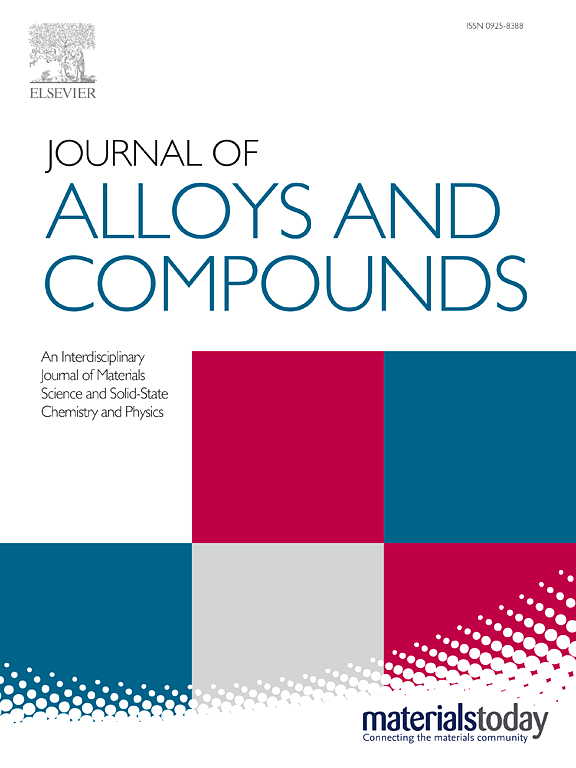Improving mechanical properties and corrosion resistance of Zn-Ni-Co ternary alloy coatings by exploring the optimum anomalous co-deposition process
IF 5.8
2区 材料科学
Q2 CHEMISTRY, PHYSICAL
引用次数: 0
Abstract
Establishment of optimum electrodeposition process parameters is essential to enhance the mechanical properties and corrosion resistance of Zn-Ni-Co ternary alloy anomalous co-deposited coatings. This study employs Hull cell experiments to delineate compositional evolution in ternary coatings, followed by systematic direct-current electrodeposition on carbon steel to quantify the [Ni2+]/[Co2+] molar ratio effects on performance metrics. Zn deposition dominated at higher current densities, while Co accumulation increased at lower currents. Ni catalyzed the deposition of both Zn and Co, while the reduction of itself was always inhibited. The increased Co content improved corrosion resistance and refined the grains, but decreased the cathodic current efficiency and coating thickness. Hardness enhancement might be attributed to grain refinement combined with phase-boundary strengthening. The best comprehensive performance was achieved by the coating with a [Ni2+]/[Co2+] ratio of 3:7, which obtained mechanical hardness of 5.24 GPa, deposition efficiency of 77.4 % and the icorr of 2.301 μA/cm2 in 3.5 % NaCl solution at 30 ℃, suggesting high resistance to uniform corrosion for the Zn-Ni-Co coating. Compared to Zn-Ni coatings, the ternary alloy showed an 82.3 % lower icorr and 53.5 % reduction in mass loss in NaCl + NaHSO3 corrosive media.
通过探索最佳异常共沉积工艺,提高Zn-Ni-Co三元合金镀层的力学性能和耐蚀性
确定最佳电沉积工艺参数对提高Zn-Ni-Co三元合金异常共沉积镀层的力学性能和耐蚀性至关重要。本研究采用赫尔电池实验来描述三元涂层的成分演变,然后在碳钢上进行系统的直流电沉积,以量化[Ni2+]/[Co2+]摩尔比对性能指标的影响。在高电流密度下,Zn沉积占主导地位,而Co积累在低电流密度下增加。Ni同时催化Zn和Co的沉积,但其自身的还原始终受到抑制。Co含量的增加提高了镀层的耐蚀性,细化了镀层的晶粒,但降低了阴极电流效率和镀层厚度。硬度的增强可能是晶粒细化和相界强化相结合的结果。[Ni2+]/[Co2+]比为3:7时,镀层综合性能最佳,在3.5% NaCl溶液中,30℃下的机械硬度为5.24 GPa,沉积效率为77.4%,icorr为2.301 μA/cm2,表明镀层具有良好的耐均匀腐蚀性能。与Zn-Ni涂层相比,该三元合金在NaCl + NaHSO3腐蚀介质中的icorr降低了82.3%,质量损失降低了53.5%。
本文章由计算机程序翻译,如有差异,请以英文原文为准。
求助全文
约1分钟内获得全文
求助全文
来源期刊

Journal of Alloys and Compounds
工程技术-材料科学:综合
CiteScore
11.10
自引率
14.50%
发文量
5146
审稿时长
67 days
期刊介绍:
The Journal of Alloys and Compounds is intended to serve as an international medium for the publication of work on solid materials comprising compounds as well as alloys. Its great strength lies in the diversity of discipline which it encompasses, drawing together results from materials science, solid-state chemistry and physics.
 求助内容:
求助内容: 应助结果提醒方式:
应助结果提醒方式:


